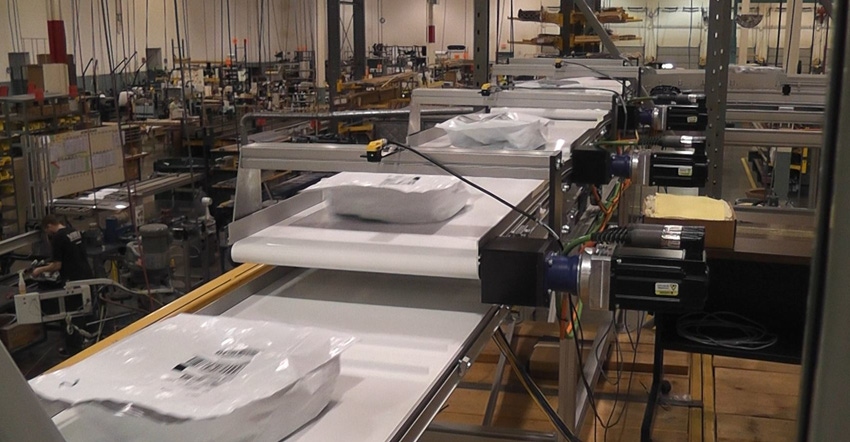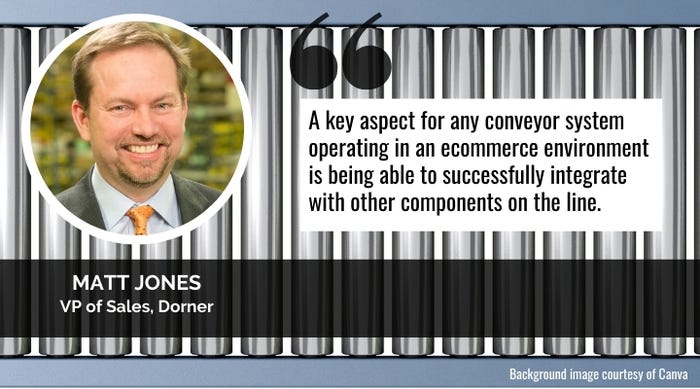3 Ways Conveyors Can Support Ecommerce Success
Running at high speed, hitting capacity targets, and integrating systems smoothly are critical to ecommerce packaging and fulfillment operations. Are the conveyors on your line moving products as quickly and effectively as possible?
July 29, 2021

The pandemic lifestyle has dramatically changed how people work, socialize, and purchase products. For many, the brick-and-mortar experience has given way to online shopping as a way to keeping a safe distance and increasing personal safety. As a result, ecommerce has seen a tremendous surge in popularity that shows no sign of slowing down.
Within these newer packaging lines, conveyors can do so much more than just delivering product from one point to another. They are playing vital roles in ecommerce applications involving:
• Merging, diverting, rotating, and sorting products;
• Accumulation systems;
• Depositing and rejects;
• Inspection, testing, and sortation;
• Product handling of all shapes and sizes.
Conveyors today are more robust than ever before, moving loads up to 1,000 pounds over long distances within facilities, while operating 24/7 – which are typical performance specifications required in ecommerce applications and regional distribution centers.
Manufacturers and retailers looking to transition their business to more of an ecommerce environment to capture their share of this growing market should take a closer look at their conveyor systems to ensure (1) they are moving products as quickly and efficiently as possible; (2) they can effectively handle your capacity; and (3) they are able to successfully integrate with other components on the line.
1. Speed.
Ecommerce has become all about speed; consumers are expecting to receive their purchases within a few days, if not sooner. A well-designed conveyor system that’s working in conjunction with other equipment within your packaging supply chain will complement, and not hinder, your ecommerce business.
2. Capacity.
One of the bigger challenges created from the growing ecommerce industry is effectively handling capacity. Many companies are smartly looking ahead and evaluating how to position themselves to manage future growth. For example, investing in automation-focused capital improvements — such as adding new pick-and-place packaging lines with the right conveyor system — is a smart way to accommodate both immediate and future growth projections.

3. Integration.
A key aspect for any conveyor system operating in an ecommerce environment is being able to successfully integrate with other components on the line. Many ecommerce packaging applications also include robotics in the form of pick-and-place systems. The ability for conveyors to integrate and communicate with robotics is a must-have requirement for project engineers designing these new lines.
While they’re generally not the first thing people consider when evaluating their ecommerce packaging needs, conveyors can make a difference in the overall success of your line.
About the Author(s)
You May Also Like


